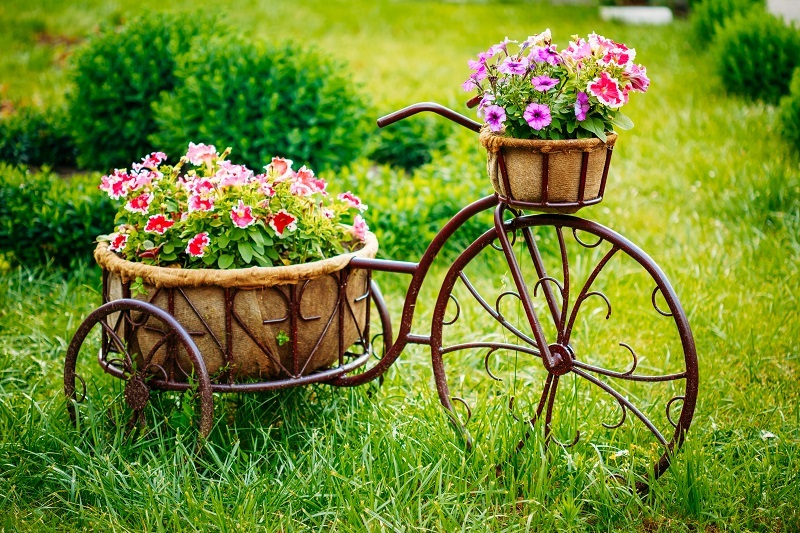Unlock the Secrets of Orchid Care
Posted on 14/08/2025
Unlock the Secrets of Orchid Care
Orchids are renowned for their exotic beauty and captivating blooms, making them one of the most sought-after houseplants around the globe. Yet, with their delicate petals and unique growth requirements, many orchid enthusiasts often find themselves puzzled by the mysteries of proper orchid maintenance. If you've ever wondered how to master orchid care and enjoy healthy, long-lasting flowers, this comprehensive guide will help you unlock the secrets of orchid care with actionable tips, expert recommendations, and tried-and-tested techniques.

Understanding the Orchid Family: More Than Just a Pretty Flower
The orchid family, Orchidaceae, is one of the largest and most diverse in the plant kingdom, boasting over 25,000 species and more than 100,000 hybrids. From the elegant Phalaenopsis (also known as the moth orchid) to the striking Cattleya and bold Dendrobium, these plants come in an astonishing array of colors, shapes, and sizes. This diversity is matched only by their adaptability--some thrive in lush rainforests, while others have evolved to survive in arid deserts.
- Phalaenopsis: Popular among beginners for its resilience and frequent blooms.
- Cattleya: Famous for its vibrant flowers, often used in corsages.
- Dendrobium: Appreciated for varied flower forms and adaptability.
- Oncidium: Known for "dancing lady" blooms and robust growth.
Unlocking the secrets of orchid care begins with understanding the specific needs of your orchid's genus and species.
Creating the Ideal Environment for Your Orchids
Light: The Foundation of Orchid Wellness
Many first-time growers underestimate the importance of proper lighting in orchid maintenance. Orchids typically require bright, indirect sunlight to thrive. While too much light can scorch leaves, too little will halt flowering.
- Phalaenopsis orchids prefer moderate light--an east or west-facing window is ideal.
- Cattleya and Dendrobium: Need bright, filtered sunlight. Consider using sheer curtains or placing them behind blinds.
- Watch for leaf color: Healthy orchid leaves should be a light, yellow-green. Dark green leaves signal insufficient light.
Temperature and Humidity: Mimic Their Native Habitat
Temperature fluctuates in orchids' natural homes--daytime warmth and cooler nighttime air help trigger flowering cycles.
- Daytime temperatures: 70-85?F (21-29?C)
- Nighttime temperatures: 55-65?F (12-18?C)
Humidity is equally important. Most orchids thrive in 40-70% humidity. To find the perfect balance:
- Place orchids on a humidity tray with pebbles and water, ensuring pots are above water level.
- Mist leaves with water, especially in dry climates.
- Use a humidifier in rooms where humidity drops below 40%.
Air Circulation - Freshness is Key
Healthy air movement discourages fungal growth and keeps leaves dry. A small, oscillating fan near your orchid's location promotes both humidity and air circulation without creating cold drafts.
The Art and Science of Watering Orchids
Proper watering is perhaps the most critical secret of orchid cultivation--and one of the most misunderstood. Overwatering is a common mistake that leads to root rot. Here's an expert approach to watering care:
- Water only when the top inch of the potting medium feels dry to the touch.
- Avoid letting the plant sit in standing water.
- In general, orchids need watering every 7-10 days, but this varies based on pot size, medium, and environment.
- Use tepid water--avoid softened or chlorinated water, which can damage sensitive roots.
- Summer months and blooming periods often require more frequent watering.
Pro Tip: Stick your finger into the pot or use a wooden skewer. If it comes out dry, it's time to water!
How to Water Orchids Correctly
- Water the entire root system thoroughly until excess moisture drains from the bottom.
- Empty any excess water from saucers or decorative planters.
- Never let orchid roots stay submerged in water.
Choosing the Right Potting Mix and Containers
Unlike traditional plants, orchids are epiphytes, meaning they grow on trees or rocks in nature. This unique adaptation means their roots require excellent aeration and fast drainage.
Best Potting Media for Orchids
- Bark-based mixes: Ideal for most orchid types, especially Phalaenopsis and Cattleya.
- Sphagnum moss: Retains more moisture for high-humidity lovers or smaller pots.
- Coconut husk chips or perlite: Increase drainage and aeration.
Orchid containers should have multiple drainage holes and allow for air flow. Clear plastic pots are terrific--they let you monitor root health and moisture levels.
Feeding Orchids: The Right Nutrition at the Right Time
Unlocking the secrets of orchid care also means understanding feeding and fertilization. Orchids do not need excessive fertilization; in nature, they absorb nutrients from decaying organic matter via water runoff.
- Use a balanced, soluble orchid fertilizer (20-20-20) every 2-4 weeks during the active growing season (spring and summer).
- Dilute fertilizer: "Weakly, weekly" is the golden rule--use 1/2 to 1/4 strength of the recommended dose.
- Flush pots with plain water monthly to prevent salt buildup, which can damage roots.
- Reduce feeding during the dormant period (fall and winter).
Repotting Orchids: When and How
Orchids need repotting every 1-2 years, typically when the potting media breaks down and doesn't drain well, or when roots outgrow the pot. Repotting ensures healthy roots, robust growth, and vibrant blooms.
Signs It's Time to Repot
- Potting medium smells sour or feels mushy.
- Roots are circling the inside of the pot or emerging from the pot's drainage holes.
- Plant growth has slowed or flowering has decreased significantly.
Repotting Steps
- Trim any dead or rotted roots with sterilized scissors.
- Position the orchid in the center of a clean pot with fresh orchid mix.
- Pack the new medium around roots, leaving space for air circulation.
- Water lightly and keep the orchid in a shaded spot for a week as it acclimates.
Orchid Care Secrets: Encouraging Re-Bloom
One of the most rewarding aspects of growing orchids is enjoying their spectacular blooms year after year. Many new orchid owners discard plants after the first bloom, unaware that with a bit of patience, their orchid can rebloom several times.
Triggering Flower Spikes
- Temperature drops at night play a key role in stimulating flower spikes. In fall, reduce night temps by 10-15?F (Phalaenopsis especially respond to this!).
- Maintain consistent watering and feeding during pre-bloom months.
- Provide sufficient, indirect sunlight--longer daylight hours can encourage flowering.
- Once a flower stem emerges, stake it for support and continue gentle care.
Important: After flowers fade, trim back the spike one node above where the first flower opened (for Phalaenopsis), which can spur a secondary bloom.
Common Orchid Problems and Troubleshooting
Pest and Disease Management
Even the best-kept orchids can fall prey to problems. Healthy plants are naturally more resilient, but be vigilant for signs of trouble:
- Mealybugs/scale: Remove with rubbing alcohol on a cotton swab.
- Spider mites/aphids: Rinse leaves under lukewarm water; use neem oil for persistent infestations.
- Root rot: Avoid overwatering and ensure proper drainage; trim affected roots promptly.
Nutrient Deficiency
Pale leaves or weak growth often indicate inadequate feeding. Adjust your feeding schedule, and make sure old potting media isn't restricting nutrition uptake.
Failure to Bloom
- Insufficient light is the most common issue. Move your orchid closer to a bright window, but avoid direct afternoon sun.
- Ensure temperature fluctuations between day and night--especially during fall and spring.
- Check for overcrowded roots or old potting media--repotting may be necessary.

The Joy of Orchid Care: Tips for Success
- Observe regularly: Get to know your orchid's preferences and behaviors.
- Patience is a virtue: Orchids take their time to adapt, grow, and bloom--don't rush them.
- Join local or online orchid societies for troubleshooting and sharing experiences.
- Remember, every orchid is unique--what works for one may not work for another.
Conclusion: Unlock the Secrets of Orchid Care for Stunning Blooms
Orchid cultivation is as much an art as it is a science. With the right balance of light, temperature, humidity, and attentive care, anyone can enjoy the striking beauty of these remarkable plants for years to come. By implementing these essential tips and orchid care secrets, you'll watch your plants reward you with lush foliage and enchanting flowers. Unlocking the secrets of orchid growing not only enhances your botanical skills but provides endless satisfaction as you witness your orchids flourish.
Are you ready to put these tips into practice and experience the magic of orchid care firsthand? With dedication, observation, and the information in this guide, your home can become a thriving sanctuary for healthy, blooming orchids. Happy growing!







